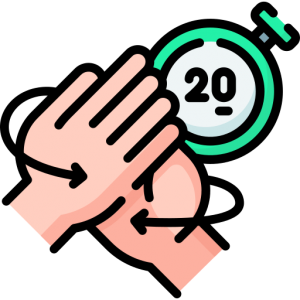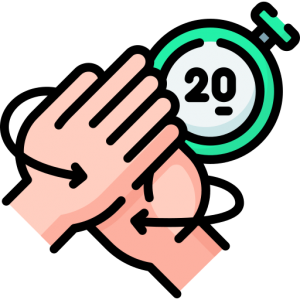
COVID-19 Precautions and Fact Sheet
Jun. 11 | 2020
Click here for a PDF fact sheet (English): COVID-19 Best Practices
What is COVID-19?
First, let’s break down the terminology COVID-19:
“CO” – Coronavirus
“VI” – virus
“D” – disease
“19” – the year it was discovered
COVID-19 is a viral respiratory illness caused by a coronavirus that has not been found in people before. This is the reason why we see the word “novel” when we refer to the virus. Because it is new, people are still learning more about it everyday. Here’s what we know as of June 2020:
How does it spread?
COVID-19 is spread from person-to-person so it is recommended to space yourself six feet or more away from other people. Distance is important because the way most people are infected is by respiratory droplets produced when an infected person coughs, sneezes or talks. The droplets can then land in the mouths or noses of people who are nearby or possibly inhaled into the lungs.
Places where people frequent and touch surfaces are important to disinfect. If you touch these areas do not touch your face as this is a way for the virus to go from that surface into your body, especially your eyes, mouth and nose. Although it is said that the virus is hard to pick up from surfaces, it’s still important to practice wiping down surfaces and avoid touching your face. This can be accomplished using soap and water, cleaning surfaces does not require a special cleaning solution.
What are the symptoms?
According to the CDC, symptoms can develop 2-14 days after exposure the most common include:
- Cough
- Shortness of breath or difficulty breathing
- Fever
- Chills
- Muscle pain
- Sore throat
- New loss of taste or smell
Symptoms can vary from person to person and there is evidence that some people may not show symptoms at all. That’s why it is important to distance yourself from people outside of your household. If someone inside your household shows these symptoms, avoid the person as much as you can. It may be a good idea for the person to isolate themselves until they have medical attention or have other symptoms that may be a result of other health conditions such as allergies.
Who can be at a higher risk for a severe case?
- People who are immunocompromised
- Cancer treatment
- Smoking
- Immune deficiencies
- Older adults (65 years or older)
- Nursing homes or long-term care facility
- People with Asthma and Chronic Lung Disease
- HIV/AIDS
- Liver Disease
- Serious heart conditions
- Severe obesity
- Diabetes
- Chronic Kidney Disease undergoing dialysis
Underlying conditions and age seem to play a large part in the severity of the impact COVID-19 has on a person. Remember, if you have one of these conditions it does not automatically mean you would be in worse health, but putting precautions in place is a smart idea.
For people who live, work and interact with individuals with these health conditions, you have to practice the same precautions. That means not introducing new people to your household, avoid visiting other people, avoid crowds and consult a doctor of precautions for the individual and their specific health condition.
What are ways to protect yourself and others?
Wash your hands often: Wash with soap and water for at least twenty seconds especially when you have been in public. You can use hand sanitizer if water is not available. Avoid touching your eyes, nose and mouth at all times, especially when you haven’t sanitized or washed your hands.
Avoid close contact: For people outside of your home, distance yourself at least six feet apart. Do not gather in groups, crowded places or mass gatherings. Avoid contact with people who are sick in your own home.
Cover your mouth and nose with a cloth face cover: Everyone should wear a face cover when they go in public. It is meant to protect other people in case you can pass it on to others. However, wearing a mask does not substitute for social distancing.
Cover coughs and sneezes: Use a tissue or the inside or your elbow and make sure to wash your hands after.
Clean and disinfect surfaces: If you don’t have access to cleaning supplies, soap and water will also kill the virus. Focus on high touch surfaces such as door handles, tables and so on.
Cultural considerations: Do not share from shared dishes. Gather in groups less than 10 with protective measures (hand washing/face covers). Instead of teaching in smaller classrooms, find larger spaces or outside to allow distancing. If you’re unsure, remember the biggest things: use a face cover, distance yourself, wash your hands.
Click here for a PDF fact sheet (English): COVID-19 Best Practices
Icons made by Freepik from www.flaticon.com






